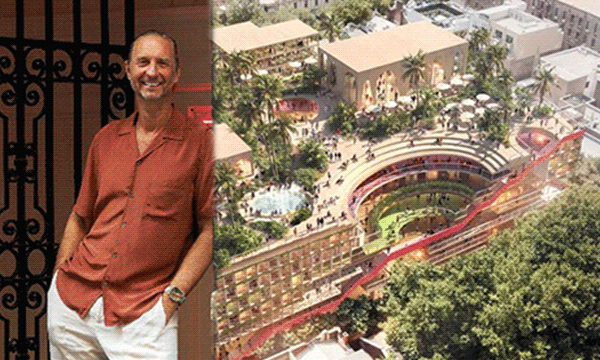Dining precincts are rising as consumers seek value

The growing popularity of dining precincts reflects a broader shift in how Australians are choosing to dine out. As cost-of-living pressures reshape consumer habits, diners are increasingly drawn to venues that offer not only food but atmosphere, variety and a sense of occasion—all within a single destination.
“We’ve been great advocates of the hospitality precinct model for many years,” Justin Hemmes, chief executive officer of Merivale told The Australian. Hemmes Ivy Precinct in Sydney includes more than 15 venues. “A diversity of venues and offerings within one site is a drawcard for those wanting choice for a range of experiences,” he said.
Hemmes is now expanding into Melbourne, with a Little Collins Street site due to open this Spring. There, he will join a highly competitive dining landscape already populated by established players like Andrew McConnell and Chris Lucas.
Lucas, whose Maison Bâtard precinct includes a cocktail bar, dining room and club, sees value in this format. “We’re seeing a strong appetite for the full journey. It’s fluid and theatrical, and people really respond to that sense of occasion,” Lucas told The Australian.
Developer-driven momentum
Property developers are also backing the trend. In Redfern, TOGA’s $500 million Wunderlich Lane project has introduced a curated collection of venues. Jacob Rolls, general manager of TOGA’s hospitality arm, said: “It helps to have one owner because we can curate an offering that gives people something different to enjoy every time they come to the precinct.”
Frank Tucker, chief executive officer of Hunter St. Hospitality, underscores the commercial benefits. “It gives diners five different opportunities to dine with us,” he says of The Collective at The Rocks, which integrates several restaurants under one precinct banner.
Still, not all ventures succeed. Neil Perry has announced a reduction in operations at his Margaret Family Precinct in Double Bay. “Managing three levels as part of the restaurant proved more complex than we anticipated. Streamlining our footprint will greatly enhance our operations,” he said.
Smaller venues retain local loyalty
In contrast, independent venues continue to thrive in neighbourhoods like Hobart and Sydney’s Inner West. Al Robertson, who manages Hobart’s wine bar Sonny, told The Australian: “The people who own restaurants and bars [near Sonny] are people I can always call on if I ever need anything. We look after each other.”
Likewise, Marc Russo of Enmore Road’s Osteria di Russo and Russo believes independent ownership brings authenticity. “We’re busier than ever... Diners can feel the difference when it’s more organic and not pre-planned.”
The road ahead
John Graham, New South Wales Minister for Music and the Night-time Economy, acknowledges precincts as part of Sydney’s recovery from lockout laws and COVID restrictions. “Sydney is in the midst of a big comeback story,” he says.
Michael Rodrigues, the state’s 24-Hour Economy Commissioner, agrees: “Whether it be high-end or eat streets, dining precincts have a significant role to play in revitalising the state’s $102 billion a year night-time economy.”
As dining becomes more experience-driven, precincts—whether multi-level destinations or eclectic neighbourhood strips—are shaping the future of Australian hospitality.
Jonathan Jackson, 5th June 2025







